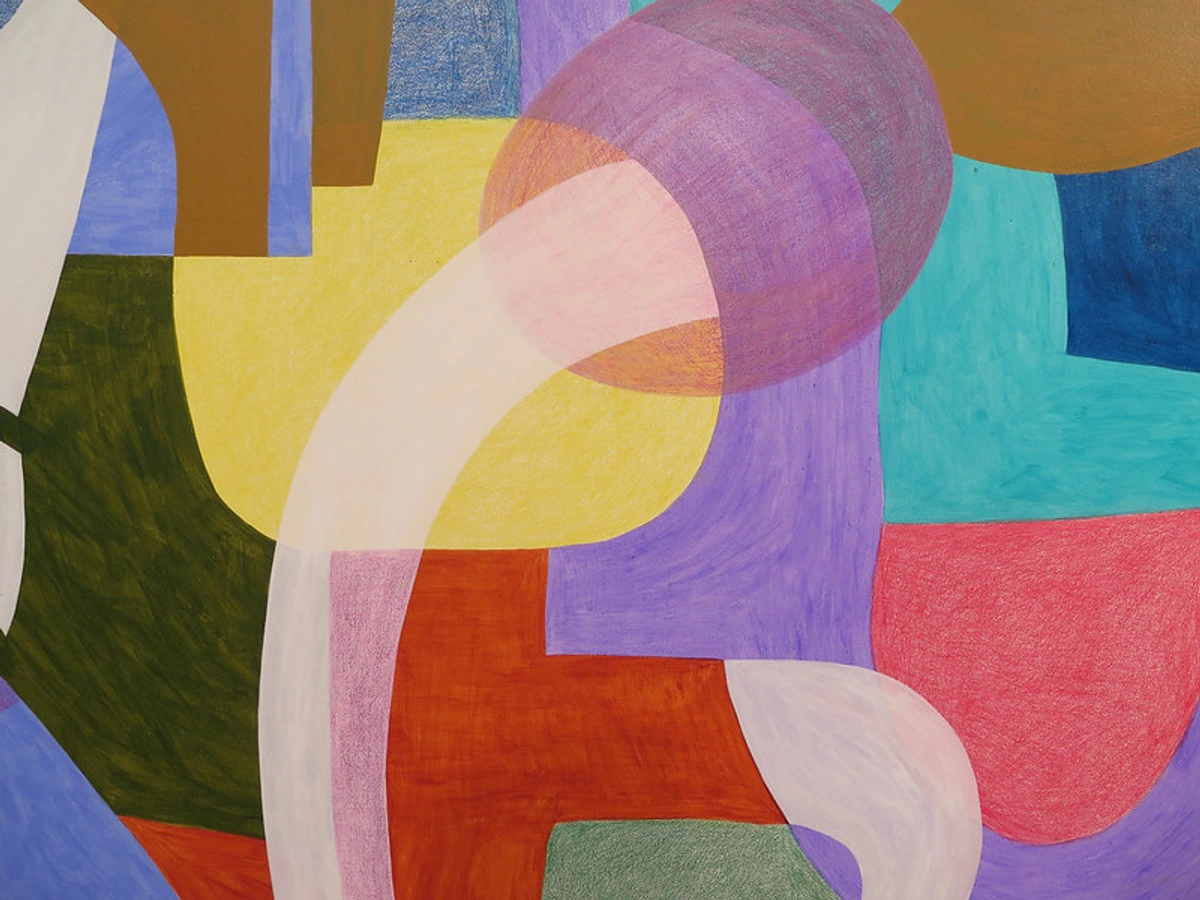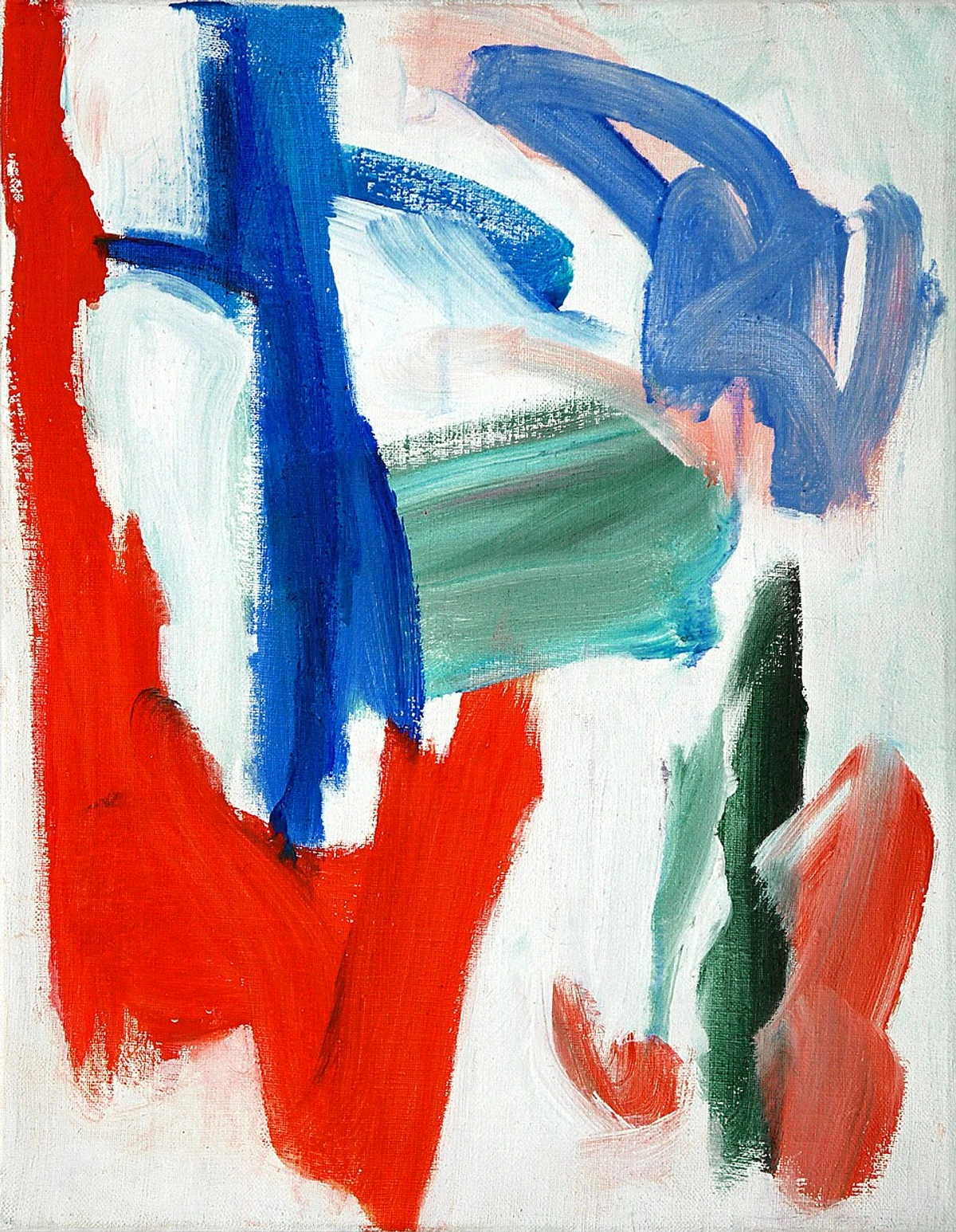
Naming Abstract Art: My Intimate & Quirky Titling Process Revealed
Uncover the intimate, sometimes quirky, process of naming abstract art. Explore my unique strategies, how titles shape meaning, and practical tips for artists. A deep dive into the art's final whisper.
The Unspoken Language: My Intimate, Sometimes Quirky Process for Naming Abstract Art
There's a curious moment in the life of every abstract painting that rarely gets discussed, yet for me, it's often the final, most intimate act of creation: the naming ceremony. You've poured your soul onto the canvas, danced with colors, wrestled with forms, and finally, there it is – a finished piece. And then, the existential dread hits. What do you call it? It's like having a beautiful, enigmatic child who refuses to tell you their name, and you're just standing there, awkwardly guessing. Is it "Untitled No. 7"? "Blue Thingy"? "That One That Took Forever"? It's not just a label; it’s an extension of the art itself, a silent whisper or a bold declaration that guides (or challenges) the viewer's experience.
I remember one particularly vibrant and restless painting that sat on my easel for weeks, staring back at me, stubbornly silent. I tried everything – abstract concepts, color theories, even song lyrics – but nothing clicked. I almost called it "No Idea What To Call This," a title that would have perfectly encapsulated my exasperation at the time. Thankfully, I didn't. For me, choosing titles for my abstract paintings is a strangely intimate, often frustrating, but ultimately rewarding part of the creative journey. It’s a dance between guiding the viewer and letting them discover their own meaning, a balance I find myself constantly grappling with, much like trying to explain a dream without losing its magic. And trust me, it’s rarely as straightforward as it seems.
The Great Blank: Why Naming Abstract Art Is So Tricky
Unlike a portrait or a landscape, abstract art doesn't depict a recognizable subject. It speaks in a language of color, form, texture, and emotion. This is both its superpower and its greatest challenge when it comes to titling. If I call it "Storm over the Ocean," am I forcing you to see a storm? What if you see a quiet sunset? The last thing I want is to put a creative straightjacket on your imagination.
The Dilemma of Interpretation vs. Description
This tension between guiding and dictating is real. It's something I often grapple with, and I’ve shared more thoughts on finding meaning in my work in Decoding Abstract Art: A Guide to Finding Meaning in Non-Representational Works and Demystifying Abstract Art: A Personal Guide to Finding Meaning. On one hand, a good title can offer a whisper, a gentle nudge toward the emotion or idea that inspired the piece. On the other, too much explanation can rob the viewer of their own unique experience. It’s a delicate balance, much like trying to explain a dream without losing its magic.
It's interesting to note how even historical abstract artists grappled with this. Pioneers like Wassily Kandinsky often used non-descriptive titles such as "Composition" or "Impression," signaling a focus on the purely visual and emotional rather than narrative. His aim was often to evoke a spiritual resonance through pure form and color, believing that specific titles would tether the art to the material world. Piet Mondrian, with his geometric abstractions, used titles like "Broadway Boogie Woogie," a rare moment of direct cultural reference, yet still left ample room for interpretation of the visual rhythm. His earlier, more analytical works, like "Composition No. IV," often had similarly abstract titles, emphasizing form over literal subject matter, striving for a universal, harmonious language. This legacy underscores the artist's enduring struggle: how much to reveal, how much to leave to the viewer. For me, understanding their approach reinforces the idea that ambiguity isn't a flaw, but a core strength of abstract art, and my titling often aims to preserve that.

My Quirky Naming Strategies: A Peek Behind the Curtain
The canvas is complete, the paint dry, and the studio is quiet. This is usually when I sit down, coffee in hand, ready for the "naming ceremony." Sometimes, it's smooth sailing, a title just clicks. Other times, it's a wrestling match with words, a blank stare at the wall, and the exasperated thought: "Is 'Untitled' really my only option again?" Like the time I spent a week trying to name a vibrant piece that felt both joyous and unsettling, only for my cat to knock over a coffee cup, and the sudden splash of brown on my sketchpad made me realize the painting was about "Controlled Chaos." Ah, the muses work in mysterious (and messy) ways. So, how do I tackle this delightful enigma? It's less of a scientific process and more of a series of rather unscientific experiments. Sometimes, the title even acts as an evolving placeholder during the creative process, shifting and refining as the painting itself develops, before the final, often dramatic, "naming ceremony." These working titles can be surprisingly accurate, or completely transform, mirroring the art's own evolution.
1. The "Feeling" Title: What Does It Feel Like?
Often, my first instinct is to sit with the painting and simply ask: "What emotion lives here?" Is it vibrant and joyous? Calm and contemplative? Or does it carry a melancholic hum? This usually happens a few days or even weeks after the paint has dried, when the initial creative high has worn off and I can look at it with fresh, less biased eyes. Curiously, the initial emotional state during creation might not always align with the feeling evoked by the finished piece. Sometimes, a piece born of quiet contemplation ends up radiating vibrant energy, and vice-versa. It’s like the painting develops its own personality once it's independent of my hands.
Example: Unspoken Echoes. For instance, I recently finished a piece dominated by deep blues and fragmented reds. It wasn't about a specific place or thing, but every time I looked at it, I felt a sense of quiet tension, like the calm before a storm, or perhaps the intensity of a difficult, yet beautiful, conversation. That one became "Unspoken Echoes." This approach aligns heavily with the themes I explore in The Emotional Language of Color in Abstract Art. While my own 'Unspoken Echoes' remains personal, a painting by an artist like Gerhard Richter, for example, brilliantly captures a similar sense of subtle power and layered emotional resonance through its abstract forms.

2. The "Process" Title: What Happened Here?
Sometimes, the most honest title comes directly from the act of creation itself. Was there a particular moment of breakthrough? Did I use an unusual technique?
Example: Subsurface Revelations. I recall a painting where I spent hours building up layers, only to scrape most of them away, revealing glimpses of what was underneath. The title, "Subsurface Revelations," came naturally. It spoke to the layers, the excavation, and the hidden beauty. This method often reflects the spirit of My Creative Process: From Concept to Canvas in Abstract Art and The Dance of Intuition and Intent: My Process in Creating Abstract Layers.
3. The "Whisper" Title: A Hint, Not a Command
These are titles that offer a poetic suggestion rather than a direct description. They aim to open a door, not push you through it. I often use single words, short phrases, or even numbers that hint at a broader concept without being explicit.
Example: Resonance. I once had a very minimalist piece with subtle shifts in tone and texture. I titled it "Resonance." It didn't describe the colors or shapes, but the feeling it evoked – a quiet hum, a deep connection. This allows the viewer to project their own experiences onto the work, which is something I cherish. It's about letting the abstract art truly be What Makes Abstract Art Compelling.

4. The "Accidental Muse" Title: When Inspiration Strikes
Sometimes, a title will just arrive. I might be listening to music, reading a book, or even just overhearing a conversation, and a phrase or a word will click with a painting I've been struggling to name. It's usually unexpected, a delightful little 'aha!' moment. Just last week, I was stuck on a piece filled with swirling yellows and deep purples, feeling like it was constantly shifting. I happened to glance at a news headline about "The Shifting Sands of Time" and instantly knew: "Temporal Flux." Sometimes, the universe just hands you the answer, and all you have to do is be open to it. It’s a testament to the fact that inspiration can really come from anywhere, a principle that often guides my overall approach to My Creative Flow: Embracing Intuition in Abstract Painting.

5. The "Series" Title: Grouping the Abstract Narrative
Occasionally, I create a series of works that explore a similar theme, color palette, or technique. In these cases, the overall series title provides the primary context, and individual pieces within the series might have simpler, sequential, or related titles (e.g., "Urban Echoes I," "Urban Echoes: City Nocturne," "Urban Echoes: Subway Serenade"). The artistic motivation behind a series is often to delve deeper into a concept, explore variations on a theme, or develop a particular technique over time, allowing for a richer narrative progression than a single piece can convey. Beyond the narrative, creating a series allows me to fully immerse myself in a specific idea, hone a particular skill, and ultimately build a more cohesive and substantial body of work for exhibitions or collections. This helps to create a cohesive body of work and invites collectors to explore a narrative across multiple canvases. For advice on building a collection, check out Building an Abstract Art Collection: A Beginner's Guide.
Key Naming Strategies Summary:
Strategy | Core Idea | Example Title |
|---|---|---|
| Feeling | Evokes emotion, mood, or inner state | "Unspoken Echoes" |
| Process | Reflects the creation journey or technique | "Subsurface Revelations" |
| Whisper | Offers a subtle hint, inviting interpretation | "Resonance" |
| Accidental Muse | Born from unexpected external inspiration | "Temporal Flux" |
| Series | Groups related works under a shared narrative | "Urban Echoes II" |
When the Muse is Absent: Practical Brainstorming Techniques
But what happens when the universe doesn't hand you the answer on a silver platter, or when the muses are on vacation, perhaps sipping Mai Tais on a beach somewhere, oblivious to your artistic torment? When inspiration is playing hard to get, I often turn to a few practical tricks to kickstart the naming process – and sometimes, even the most absurd thought can lead to a breakthrough:
- Word Bank: I keep a running list of evocative words, interesting phrases from books, song lyrics, or overheard conversations that resonate with me. It’s like a personal lexicon of potential titles. For a piece that felt like a quiet, persistent energy, I might have started with 'hum,' 'vibration,' 'current,' until "Undercurrent" clicked, even if it initially seemed too simple.
- Music & Mood: Listening to different genres of music while looking at the painting can often unlock a hidden rhythm or emotional connection that sparks a title.
- Free Association: Simply writing down every word, image, or feeling that comes to mind when looking at the piece, no matter how nonsensical, can reveal unexpected connections. And yes, sometimes those connections are utterly ridiculous – my notepad once had 'glowing broccoli' next to a serious piece, but that very absurdity helped me pivot to 'Organic Radiance'!
- Mind Mapping: I'll sometimes create a visual map, drawing the painting in the center and branching out with associated words, colors, memories, and even random thoughts. It’s surprising how a seemingly disconnected idea can suddenly illuminate the perfect title.
- Reverse Brainstorming: Or, in moments of utter desperation, I'll try 'reverse brainstorming' – what's the ABSOLUTE worst, most cliché, or ridiculous title I could give this? Sometimes, by clearly identifying what I don't want, the right path becomes clearer, often leading to a good laugh at my own expense.
- Trusted Eye: Sometimes, asking a trusted friend or fellow artist for their first impression – perhaps even "What title would you give it?" or "What story does it tell you?" – can offer a fresh perspective and a title I might never have considered.

Beyond the Studio: The Practicalities of a Title's Life
Once a title is chosen, it embarks on its own journey, living far beyond the quiet confines of my studio. It's the painting's public face, appearing on gallery tags, in online listings, and across social media captions. Beyond gallery tags and online listings, a title lives in exhibition catalogs, artist statements, and is often the first thing a collector asks about when discussing a piece. This practical reality often influences my final decision. Brevity, memorability, and even a whisper of SEO (though the art always comes first!) become key considerations. A good title doesn't just resonate with the art; it helps the art find its audience. It's the small but mighty flag that marks its presence in the vast landscape of visual culture.
What to Avoid: Common Titling Pitfalls
So, with all these strategies, what's the secret to a bad title? While the process of naming is deeply personal, there are a few common traps I try to steer clear of. I once almost titled a particularly vibrant and chaotic piece "My Brain on Mondays." Thankfully, I came to my senses. It's about finding that sweet spot between connection and constraint:
- Overly Literal Titles: Calling a swirling blue painting "Swirls of Blue" might seem straightforward, but it leaves no room for imagination. Instead of "Unspoken Echoes," calling it "Blue and Red Swirls" would be an example of an overly literal title that stifles imagination and leaves no room for discovery. Abstract art thrives on ambiguity; a literal title can kill that magic.
- Cliché or Generic Phrases: Titles like "Abstract Expression" or "Modern Art Piece" tell the viewer nothing about this specific painting and come across as uninspired. Every piece has its unique voice.
- Pretentious or Overly Academic Language: Unless it's truly fitting for the piece, using overly complex or obscure words can alienate viewers rather than invite them in. The goal is to connect, not to intellectualize beyond reach.
- Titles That Don't Age Well: Sometimes a trending phrase or a very specific pop culture reference might feel clever in the moment, but consider if it will still resonate in five or ten years. Timelessness is often a virtue.
- Titles That Are Too Long or Hard to Remember/Pronounce: Imagine trying to tell someone about "The Existential Quandary of a Crimson Hue Contemplating the Ephemerality of Form No. 3." It might be profound, but it's certainly not memorable. Brevity and clarity are often your friends.
When "Untitled" Is the Perfect Title
Yes, sometimes the best title is no title at all. The word "Untitled" can be a powerful statement in itself. It tells the viewer: "This is for you to define. I'm offering pure visual experience, unadulterated by my own interpretation." It requires courage to let a piece stand completely on its own, but it can be incredibly liberating for both artist and viewer. It's about trusting the viewer to find their own reflection, as discussed in Finding Your Reflection: How Abstract Art Can Be a Mirror to Your Inner World.
Of course, "Untitled" is also often used when I'm just plain stuck, and my brain has decided to take a much-needed vacation! My studio probably has a whole 'Untitled' series of its own, just waiting for my muse to return from its sabbatical.
Frequently Asked Questions About Naming Abstract Art
Still curious about the mysteries of abstract art titles? Here are some common questions I often encounter:
Do abstract paintings need titles?
Not necessarily! While titles can add an extra layer of meaning or a starting point for interpretation, many abstract works stand powerfully on their own without one. It's entirely up to the artist and, to some extent, the context in which the art is presented.
Can a title change the meaning of an abstract painting?
Absolutely. A well-chosen title can nudge a viewer towards a particular feeling, concept, or even a hidden narrative. A poorly chosen or overly literal title, however, can limit interpretation or even misguide the viewer. It's a powerful tool, to be wielded with care.
Is "Untitled" a bad title for abstract art?
No, not at all. "Untitled" can be a very deliberate and effective choice, particularly for abstract art. It encourages viewers to engage with the work purely on a visual and emotional level, without any preconceived notions or external guidance from the artist.
How do collectors react to abstract art titles?
It varies greatly. Some collectors love titles that provide a poetic insight or a personal connection to the artist's intention. Others prefer "Untitled" pieces, feeling it allows for a more personal and unencumbered connection. Ultimately, the art itself is the primary draw, but a good title can certainly enhance the experience and, in some cases, even impact a painting's marketability by making it more memorable or relatable.
Is there an ideal length or convention for abstract art titles?
There's no strict rule for length. Titles can range from a single evocative word ("Resonance," "Journey") to short, poetic phrases ("Unspoken Echoes," "Chromatic Drift"). As for conventions, capitalization typically follows standard sentence case or title case, but consistency within an artist's body of work is more important than a universal rule. The most important aspect is that the title feels right for the piece.
Should my abstract art title be unique?
While not legally required to be unique (like a trademark, for instance), aiming for a distinctive title is always a good idea. It helps your artwork stand out, makes it more memorable, and prevents confusion with other pieces, especially if they are by well-known artists. A unique title enhances your artwork's individual identity.
The Art of the Reveal
Naming an abstract painting is the final act of creation for me, a closing thought, but it's also the beginning of its public life. It's when I take a deep breath, step back, and decide what little hint, what little piece of my soul, I want to share with the world, beyond the brushstrokes themselves. This decision also considers the practicalities of how the title will live: on a gallery tag, in a website listing, or in a social media caption. Brevity and evocative power become key in these contexts. My approach to naming has certainly evolved over the years, shifting from more literal early attempts to the more intuitive, emotional, and process-driven methods I employ today. It's a reflection of my growth as an artist and my deepening understanding of the abstract language itself.
Once chosen, a title becomes intertwined with the painting, shaping its long-term impact. It can enhance its memorability, foster a deeper emotional connection for viewers over years, and even influence its perceived value as a coherent piece within a larger artistic narrative. It's a personal process, deeply tied to the Why I Paint Abstract: My Personal Philosophy and Artistic Vision and the journey of Finding My Voice: The Evolution of My Abstract Artistic Style. And while it might seem like a small detail in the grand scheme of art, for me, it's the moment the painting truly finds its voice, ready to be discovered by you.

Key Takeaways on Naming Abstract Art:
- It's an Art Form: Naming is a crucial, final creative act, not just a label.
- Balance Guidance & Discovery: Titles should hint at meaning without dictating interpretation.
- Strategies are Personal: Whether by feeling, process, hint, or accident, find what resonates with your art.
- Avoid Pitfalls: Steer clear of literal, cliché, pretentious, or quickly dated titles.
- "Untitled" is Valid: Sometimes, no title is the most powerful statement.
- Practicalities Matter: Consider how the title will live on gallery tags, websites, and social media.
I hope this peek into my slightly chaotic, always introspective titling process has been insightful, maybe even a little amusing. If you've enjoyed this journey, perhaps you'd like to explore some of the art that has found its perfect name. Feel free to browse my art for sale or learn more about my journey on my timeline. I'd also love to hear your thoughts: How do you think titles influence your experience of abstract art? Share your perspectives in the comments below!




